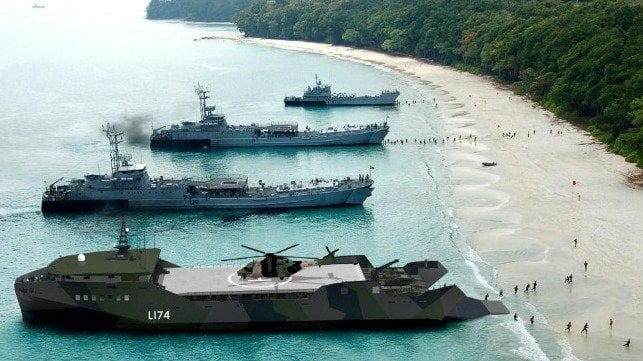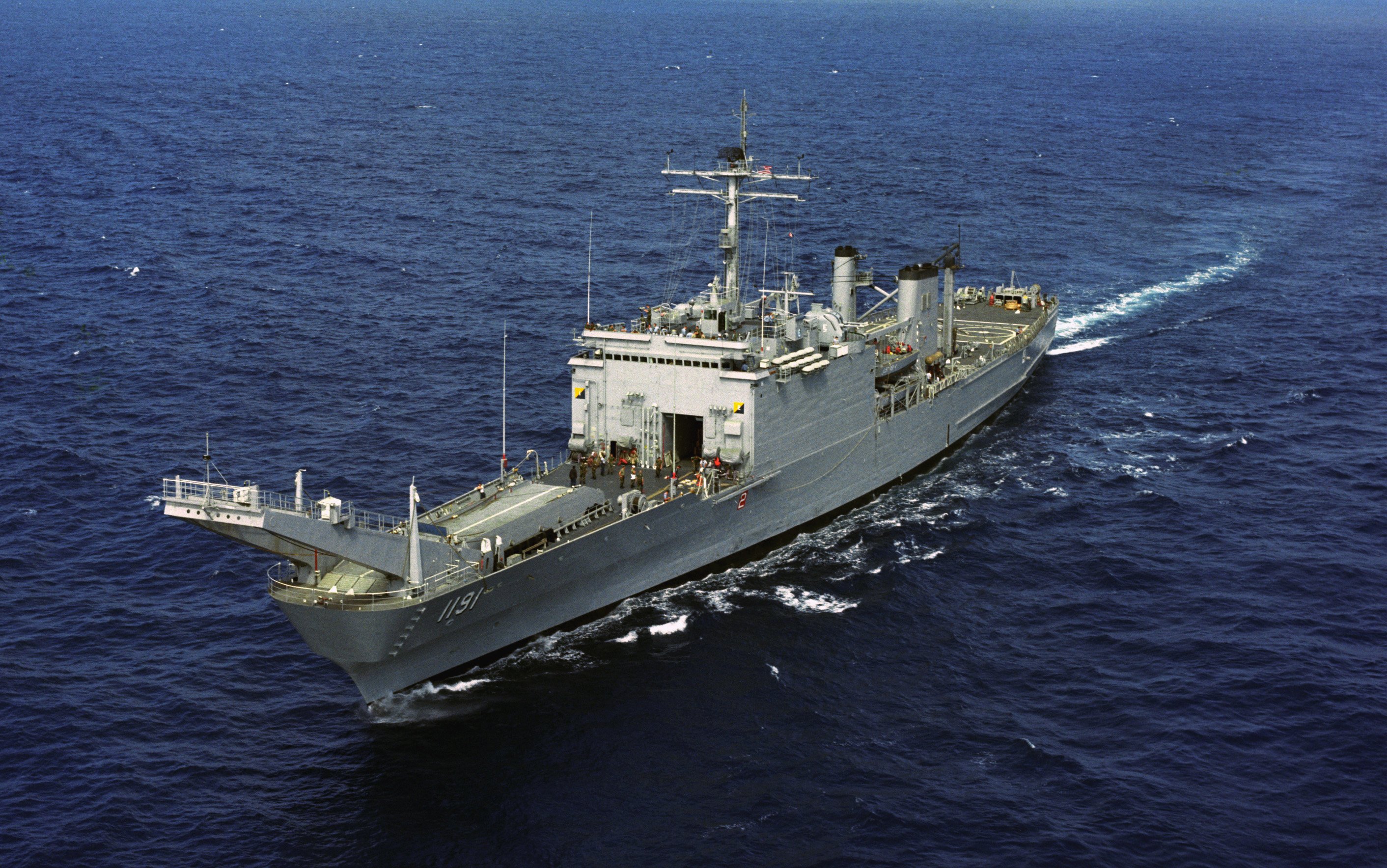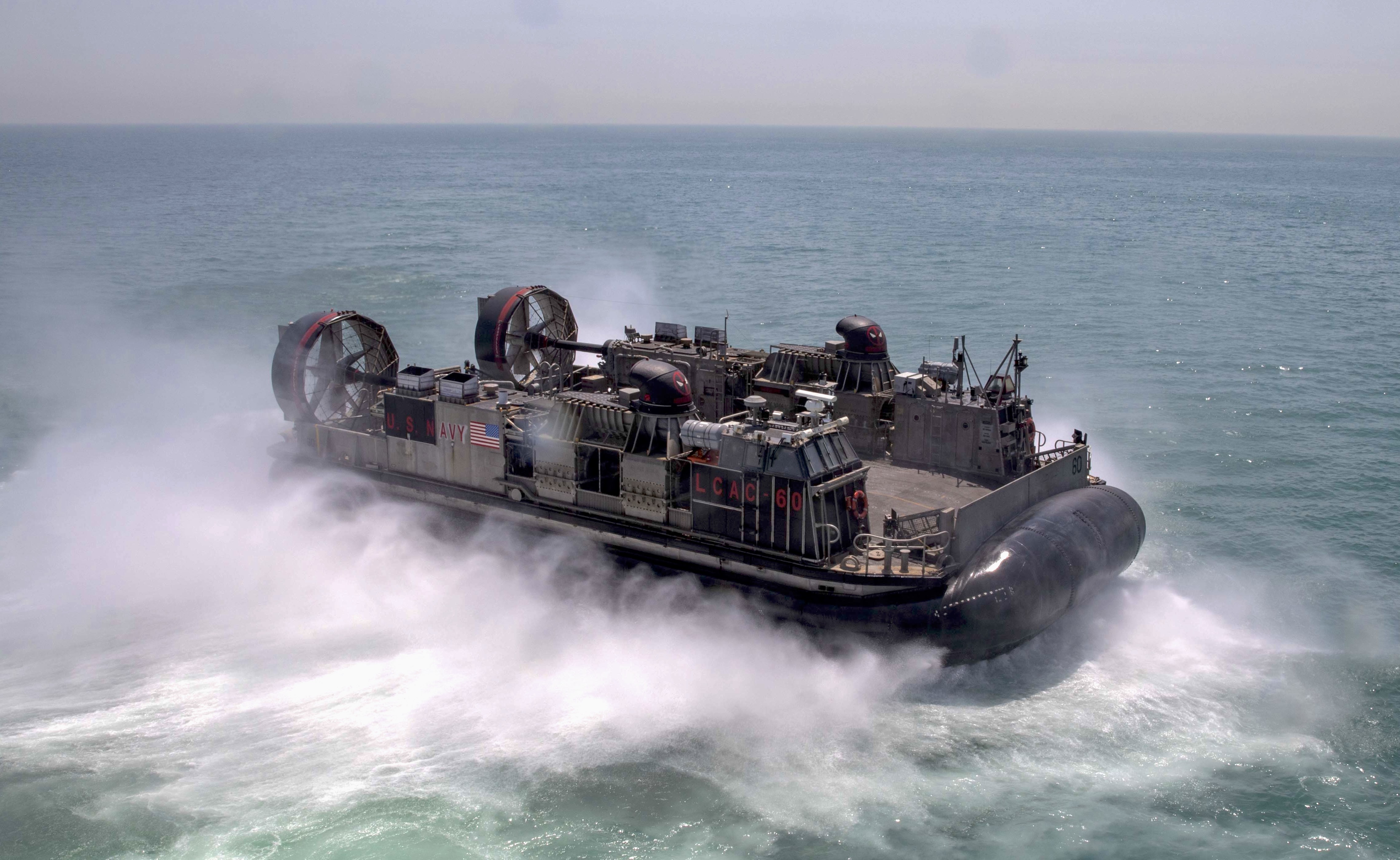
The Navy and Marine Corps are finalizing a list of requirements for the Light Amphibious Warship that Marine leadership argues is key to how the service will fight its future island-hopping campaigns.
The services pitch LAW as a medium amphibious warship with a small crew that can haul 75 Marines from shore to shore without tying up the Navy’s larger amphibious ships for smaller operations, for the price tag of $150 million or less per hull.
“You look at the existing portfolio and you have our existing globally deployable, long duration, multipurpose amphibious warfare, L-class ships. And then you have the smaller complementary surface connectors that go in those L-class well decks, but there is the gap there in between the large multipurpose amphibs and the surface connectors. We’re back to needing the capability once again for a medium-sized landing ship. And that’s what the Light Amphibious Warship is intended to fulfill,” Capt. Scott Searles, the program manager for PMS 317 that oversees the amphibious assault and connector programs, said Thursday.
The Navy and Marine Corps are still working on the final list of requirements for LAW, with the basic outline for the platform nearing completion and the analysis of alternatives awaiting Pentagon approval soon, Searles said.
As it stands, LAW is “going to be between 200 to 400 feet long, roughly 3,000 to 4,000 tons and carrying [8,000] to 10,000 square feet of cargo. The primary focus is to enable the maneuver support for the Marine Corps.” Searles said.
For decades the Navy operated tank landing ships (LSTs) that allowed the service to transit long distances over blue water and directly deposit tanks on shores. However, the advent of a landing craft air cushion (LCAC) that could transport tanks ashore from larger amphibious ships at long distances prompted the service to shed its last LSTs in the early 2000s. For 20 years, the Marines planned for massive contested amphibious landings that would deposit large groups of Marines ashore. However, the service’s new Forces Design 2030 effort calls for smaller units of Marines to quickly move from island to island and distribute across wide swaths of territory, making a modern LST-type ship attractive again.

“The maneuver capability is shore to shore. And that’s created a beaching requirement. That comes with a lot of dusting off the books and how do we design ships that are intended to beach,” Searles said.
Previous concepts have suggested a stern-first landing ship, but a notional concept Searles displayed at the National Defense Industry Association’s Expeditionary Warfare conference on Thursday showed a ship that would unload from the bow.
Brig. Gen. David Odom, the expeditionary warfare director on the chief of naval operations’ staff (OPNAV N95), described the pursuit of LAW as a “full court press” initiative.
“We’re leaning in hard on the Light Amphibious Warship,” Odom said during a separate panel at the conference.
“We are full court press with all stakeholders, working closely with teammates to bring that capability in … working to get the right balance of survivability and affordability to deliver that capability that the fleet needs, the Commandant needs, in support of Force Design and in support of Distributed Maritime Operations.”
Moving ahead, the services expect a “full and open competition” once they issue the request for proposals for the detail, design and construction phase, according to Tom Rivers, the executive director of the amphibious, auxiliary and sealift office within the Program Executive Office for Ships.
After issuing five companies “concept design” contracts last year, those same five companies recently received options for the preliminary design phase, Rivers said. The companies working on the preliminary design are Fincantieri, Austal USA, VT Halter Marine, Bollinger and TAI Engineers.
“So LAW – the initial thought process is based upon parent designs that are already out there in the world today to, again, to reduce our risks,” Rivers said at the conference. “As new requirements are generated out of the Pentagon, we actually are sharing those with the shipyards so they can kind of see what we’re thinking about how it evolves over time and then they can kind of build that into the – and they come back to us and say, ‘hey here’s the impact of that particular change on our configuration.’ Either it’s small or large and then we take that in consideration into the final requirements.”
This type of process is helping the Navy determine what it can do with the various parent designs, Rivers said.
“We’re looking to make sure we have our minimum requirements, but we’re also trying to see what’s the maximum capability we can get for the amount of money we can afford to procure,” he said.
The current goal is to keep the cost of LAW at $150 million per hull, Rivers said.

“We’re trying to buy the ship within the budget, but we’re also looking at what are the range of possibilities right now for the different types of technologies, different survivability, recoverability aspects. What does that cost? How does that get into design?,” he said.
“And at the end, if the determination is the requirements are needed no matter what, then the budget will get adjusted to what those requirements are.”
Searles said his program is taking cues from the Navy’s ongoing effort to develop autonomous systems and looking to squeeze out the number of sailors needed to crew a LAW.
“It’s our plan in our strategy to pull many of those features into the requirements for [the] Light Amphibious Warship as well. Mostly what our interests for LAW is that it’s going to be a very lightly manned ship,” Serales said.
“The idea is to not have a huge crew, we have a goal right now, I think we’re at 59 for the crew. And we think that’s too many. We would like it to be less, but we know from our previous forays as a Navy into lightly crewed ships, that it’s challenging for those small crews.”
Marine Corps Commandant Gen. David Berger said earlier this week that the LAW is meant to complement the big-deck amphibious warships in the fleet. Berger has repeatedly said the Navy needs to buy LAW quickly and at an affordable cost. But purchasing the ship would come out of the Navy shipbuilding account, which has multiple big ticket items to pay for in the coming years.
“There is not a tradeoff. Our capacity in the industrial base can handle both. And I know that not anecdotally, but my conversations with leadership at places like Huntington Ingalls is they have the capacity. And they are complementary capabilities. They are not a substitute for each other because a traditional amphibious ship has all the attributes that we know and love so much over the years that a Marine Expeditionary Unit and Amphibious Ready Group have been using,” Berger said at the conference on Tuesday.
“The Light Amphibious Warship isn’t a substitute for that. It’s the tactical mobility to move a smaller element organically that fits this stand-in force approach that we’re taking,” he continued. “The industrial base has the capacity. No, they are not substitutes for each other. They’re complementary capabilities.”





